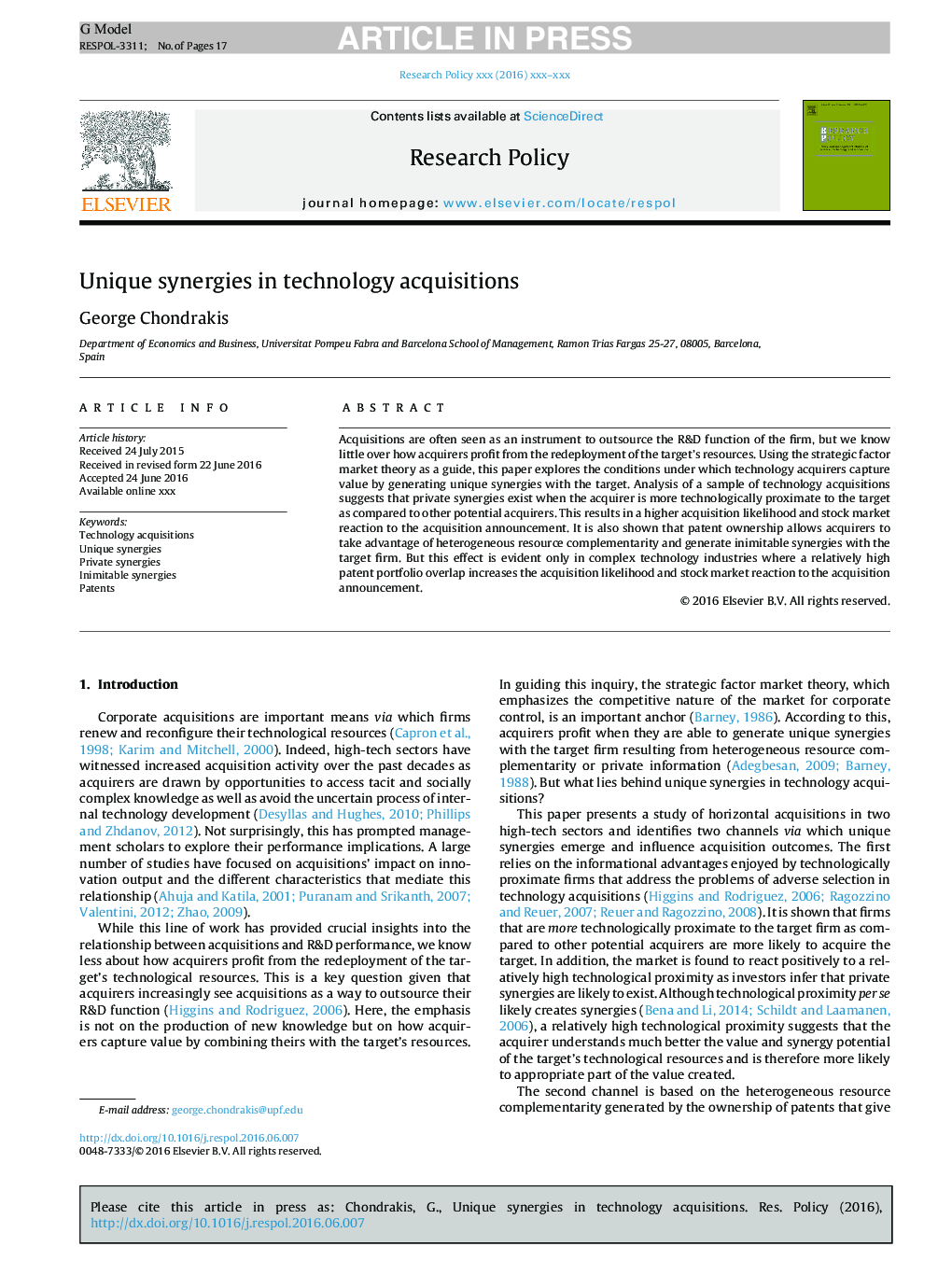| Article ID | Journal | Published Year | Pages | File Type |
|---|---|---|---|---|
| 5103933 | Research Policy | 2016 | 17 Pages |
Abstract
Acquisitions are often seen as an instrument to outsource the R&D function of the firm, but we know little over how acquirers profit from the redeployment of the target's resources. Using the strategic factor market theory as a guide, this paper explores the conditions under which technology acquirers capture value by generating unique synergies with the target. Analysis of a sample of technology acquisitions suggests that private synergies exist when the acquirer is more technologically proximate to the target as compared to other potential acquirers. This results in a higher acquisition likelihood and stock market reaction to the acquisition announcement. It is also shown that patent ownership allows acquirers to take advantage of heterogeneous resource complementarity and generate inimitable synergies with the target firm. But this effect is evident only in complex technology industries where a relatively high patent portfolio overlap increases the acquisition likelihood and stock market reaction to the acquisition announcement.
Keywords
Related Topics
Social Sciences and Humanities
Business, Management and Accounting
Business and International Management
Authors
George Chondrakis,
